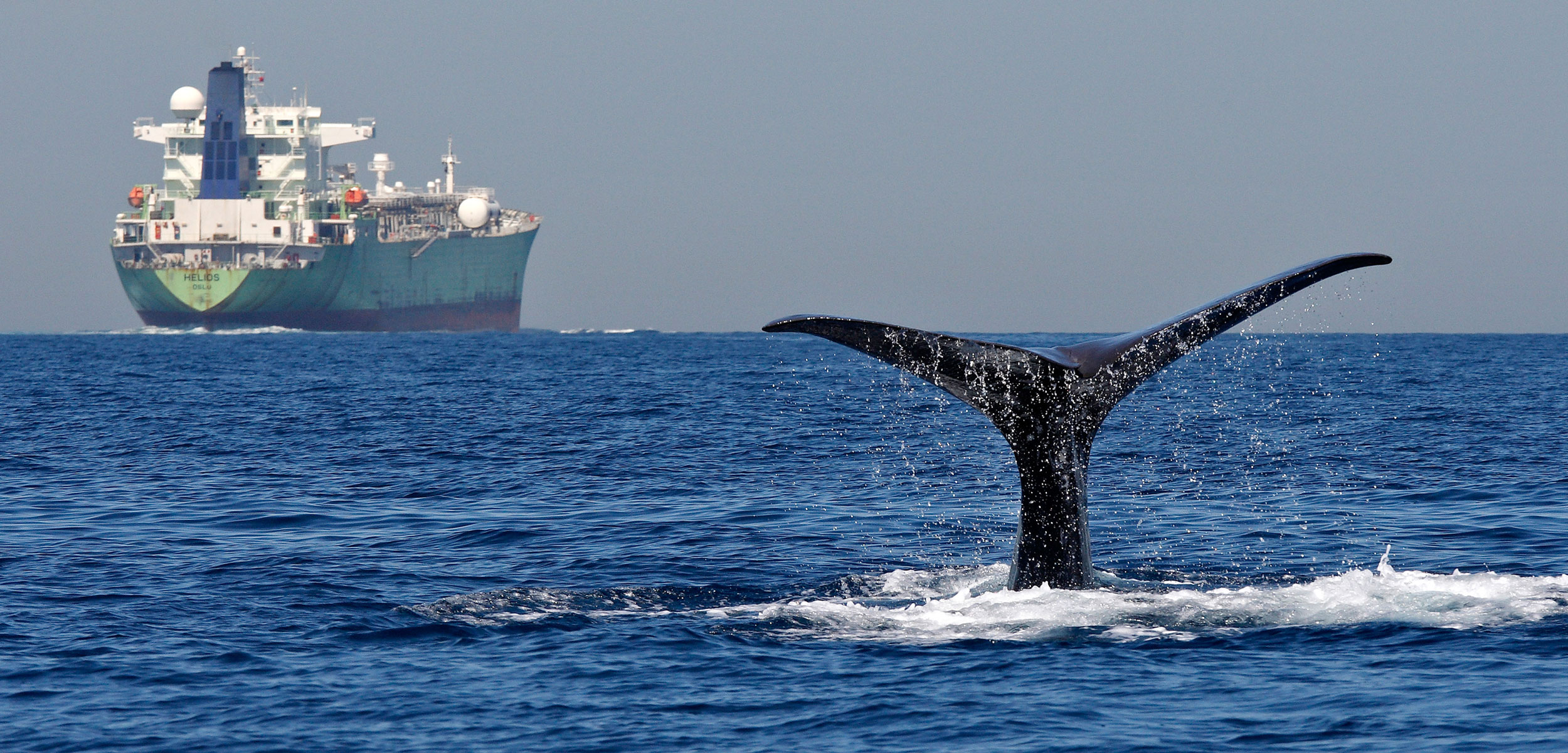Stopping Marine Roadkill
Scientists are taking cues from road impacts on wildlife to keep whales and sharks safe from ships.
Article body copy
When Vanessa Pirotta is surveying whales in the frigid water off Antarctica, the traffic-packed roads back home are far from her mind. “You see absolutely nothing out there at times,” says Pirotta, a marine biologist at Macquarie University in Sydney, Australia. “So when a ship eventually comes along, I think about how jarring it must be for a whale or shark.”
Marine roads are invisible, but they are busier than ever. Each year, ships use these paths to ferry more than 10 billion tonnes of goods from one country to the next. Global trade relies heavily on seaborne transport, but large whales and sharks are paying the price.
Ship strikes are one of the leading causes of death and injury in whales. Collisions account for more than half of all fatalities in some species, such as the North Atlantic right whale. The low rumble of cargo vessels also disrupts marine mammal communication, hindering their ability to navigate during migration and find food.
According to Pirotta, these impacts likely hit the giants of the ocean the hardest, as they are more likely than smaller species to cross paths with ships. “Great whales, basking sharks, and whale sharks are more vulnerable because they spend a lot of time close to the surface,” says Pirotta. “They travel over long distances, and so do ships.”
In recent research, Pirotta and her team turned to an unlikely source—land road infrastructure—to uncover new insights into how to protect marine giants from ships. Biologists managing wildlife living near busy freeways often draw on a system known as the road ecology framework to provide a snapshot of threats and potential mitigation strategies. But the “roads” in Pirotta’s study are shipping routes used to shuttle cargo across the sea.
Using this framework, the researchers were able to review the current threats associated with shipping and pinpoint key steps to minimize them.
To shield animals from ship strikes, the team suggests reducing speed limits in shipping lanes, and even diverting some ship lanes away from areas frequented by marine giants. In fragile areas like the Arctic, where melting ice has opened up previously inaccessible areas, they say establishing new shipping pathways should be avoided altogether. This would create quiet sanctuaries similar to no-take fishing reserves.
But making changes to the marine roads themselves only tackles one side of the problem. “The roads we drive on every day have visible edges,” says Pirotta. “But in the ocean, there are no clearly defined boundaries.” This means that indirect impacts, such as sound and chemical pollution, can extend far beyond shipping lanes.
With this challenge in mind, the researchers propose spacing out shipping routes, establishing buffer zones to lower the spread of noise and contamination into nearby whale habitats. These roadside boundaries could be constructed using models that estimate how far noise travels in different areas of the ocean. Designing cleaner, quieter ships will help mitigate these effects even further.
Hedley Grantham, director of spatial planning at the nonprofit Wildlife Conservation Society, points out that implementing some of these strategies will require action from policymakers.
“The marine noise issue in particular needs to be prioritized, as we are constantly learning more about how it affects marine giants,” says Grantham, who was not involved in Pirotta’s research. “We need to legislate noise-free areas to protect these animals from vessels.”
Pirotta hopes that the research will spark discussions between marine scientists, policymakers, and the shipping industry about developing new ways to protect marine life from maritime transport.
“It’s about working towards a common goal,” says Pirotta. “At the end of the day, marine scientists want to keep marine mammals safe from ships, and so does the shipping industry.”

